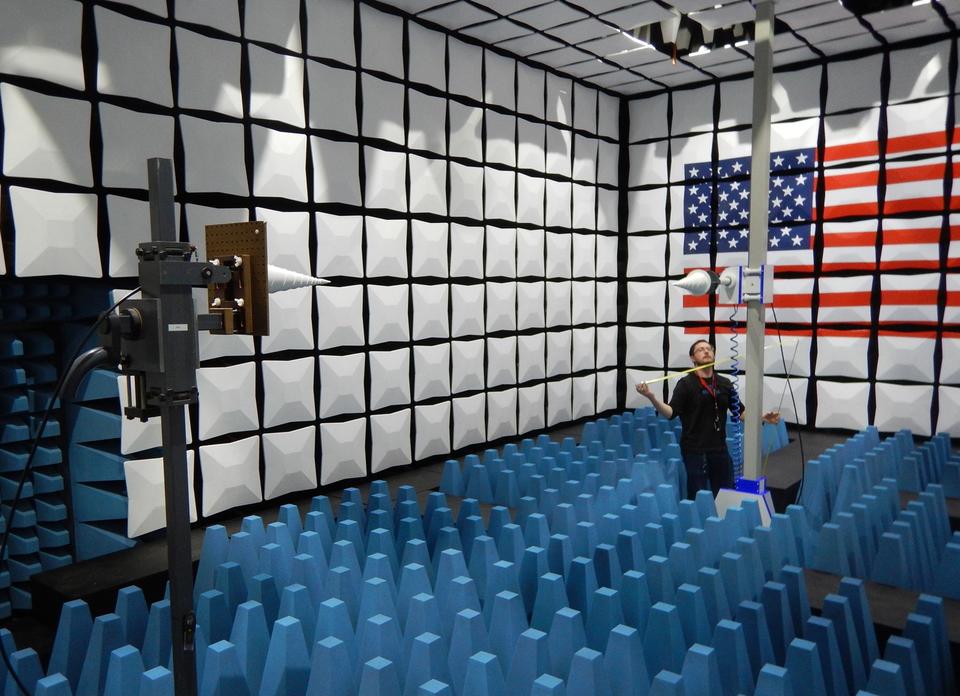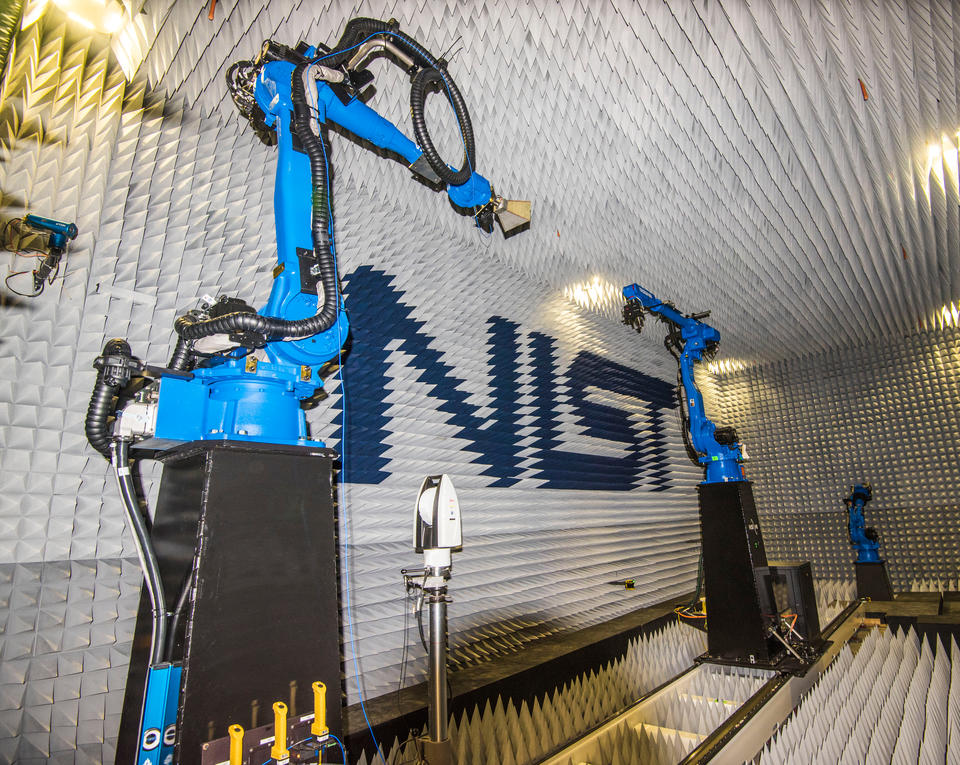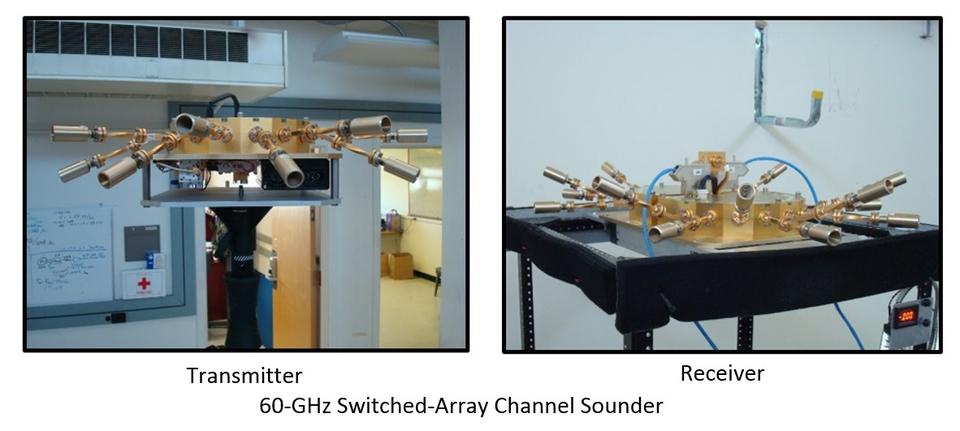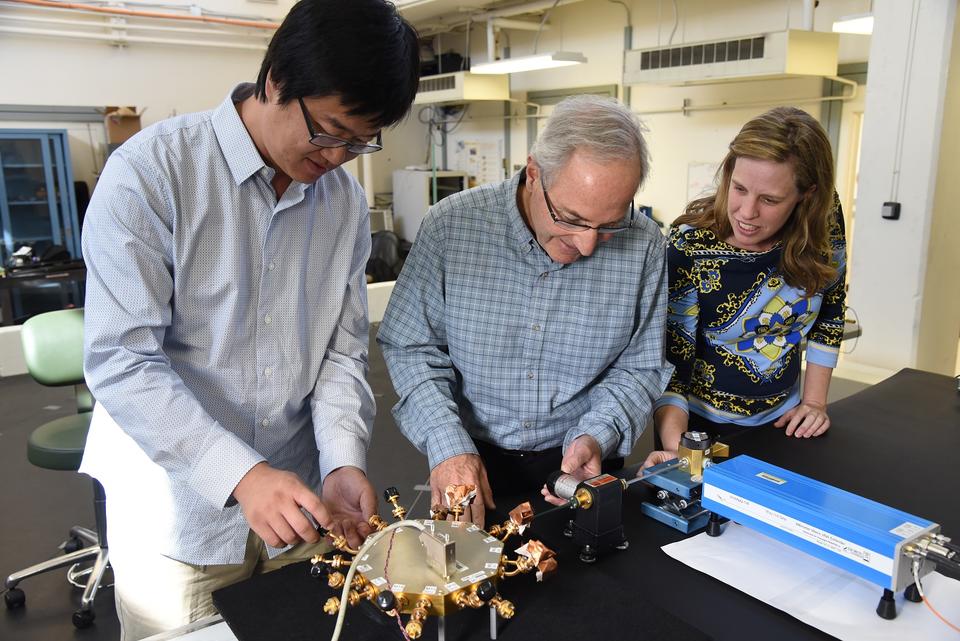NextG: 5G-and-Beyond Technology

“Fifth-generation” or “5G” refers to the most recent wireless communications systems, which are faster and carry more data than 4G or LTE systems, enabling more connections for devices like cellphones and a wider range of wireless technology applications. As these systems and technologies rapidly advance, scientists and engineers often refer to future high-speed wireless communications as simply “next-generation” or “NextG.”
As the nation’s measurement institute, the National Institute of Standards and Technology (NIST) is helping to create the technologies and methods that industry can use to build and evaluate 5G-and-beyond systems.
What is 5G?
Cellular networks go through evolutions over time. Industry, marketing and communications engineers group these generations together based on their abilities and characteristics. For example, 3G advanced voice calling from the previous generation and started to include data capacity. Fourth-generation or 4G gained the ability to send photos and video, even streaming video, and upped the capacity for data.
Fifth-generation systems accommodate a higher amount of data at higher speeds, allowing more video streaming and new data-heavy tools like virtual reality or augmented reality. The development of these technologies will support not only future smartphones and public safety radios but also wearable devices, the Internet of Things, the smart grid, smart homes, next-generation automotive technologies and smart manufacturing.
How do we get 5G?
Wireless communications systems send data and information through invisible radio waves. The spectrum of these radio frequencies is shared by all communications devices, from broadcast television and radio to navigation and cellphones.
A frequency is measured by how close the peaks of the radio waves are to each other. Radio wave peaks in low-frequency ranges (300 kilohertz to 3 megahertz) are hundreds to thousands of meters apart. Those ranges can travel long distances, and are used by a lot of radio navigation equipment, AM radio, and even some mobile devices. Modern cellphones use frequencies in the 800-megahertz (MHz) range, where the peaks are less than 40 centimeters apart.
Recently, wireless communications engineers are working on millimeter-wave (gigahertz or GHz) and terahertz (THz) frequencies. The peaks between waves in these ranges are millimeters apart or closer. Higher frequencies have higher bandwidths, allowing the device to send and receive more data. While 5G technologies will also use lower frequencies, accessing these higher frequency ranges means 5G can offer higher speeds and data-carrying capacity than the previous generation of devices.
The first 5G standards were ratified in late 2017 and define 5G technologies as using frequency bands up to 52.6 GHz. Achieving reliable 5G and beyond is about an entire communications ecosystem, from the hardware inside wireless devices to broadband networks, Wi-Fi, and how we share the radio frequency spectrum itself.
What is NIST doing for 5G and NextG?
Rather than continuing to divide wireless communications into specific generations, researchers have started referring to technology advances beyond 5G simply as next-generation or NextG.
NextG is riddled with technical challenges, not only in the equipment, but in accessing and using the increasingly crowded radio frequency spectrum. With so many possible 5G and NextG systems, the communications industry needs accurate measurements of several elements within the wireless ecosystem:
- Signaling and overall performance of transistors that operate at millimeter wavelengths;
- Wireless signal propagation;
- Antenna beam forming, beam steering and over-the-air performance; and
- New methods and tests to evaluate device performance and minimize interference.
NIST has a central role to play in making NextG a reliable and ubiquitous technology by rigorously measuring and testing all of the parts of the wireless ecosystem and using those measurements to help the communications industry develop standards for these new networks and devices.
NIST operates critical state-of-the-art test beds and infrastructure for 5G, including the National Broadband Interoperability Test Bed, the Antenna Communication and Metrology Laboratory, and the new 5G Coexistence Test Bed, which provides access to an end-to-end 5G test environment for federal agencies, academia and industry, outside of a proprietary corporate environment.
Here are some of the ways that NIST is working on these parts of the 5G and NextG ecosystem.
Antenna measurements

Accessing higher frequency ranges starts and ends with antennas and receivers. Scientists and engineers need to know how signals travel between antennas and receivers as they develop 5G-and-beyond compatible devices. As we have reached higher frequencies, transmitters, receivers and the instruments used to study them experience large signal distortions at millimeter-wave frequencies, making them difficult to measure.
NIST provides measurement services that help correct these distortions and link these high-speed signal measurements to fundamental physical quantities. Our innovations include the world’s first robotic-arm antenna testing system, an antenna test range designed specifically for 5G measurements. The Large Antenna Positioning System (LAPS) uses two robotic arms to measure and test antennas inside an anechoic chamber, which prevents the signals from bouncing around the room.
Channel sounding and modeling
Wireless communications researchers also need precise measurements to learn how high-frequency signals move through any given space. How does the signal change as it travels? How does it bounce off of walls, trees, rocks or even people walking through the room? These are all questions that need to be answered to characterize the channel.
NIST uses custom, state-of-the-art channel sounders to answer these questions. The transmitters and receivers have been placed on robots and moved through spaces to study how the signal changes and propagates. These studies move outside the lab, studying signal propagation indoors and outdoors, including how signals bounce off people in the space.

NIST researchers use these tools to create channel models that commercial industries rely on to develop new products.
Signal models
There are a lot of uncertainties researchers need to account for to understand these high frequency signals. Precise evaluations of complex, high-speed signals and systems require the use of new techniques to quantify measurement uncertainties.
To meet this need, NIST staff members developed a software tool, the NIST Microwave Uncertainty Framework, which allows users to build uncertainty models of instruments and systems and use simulations to help estimate uncertainty. This provides a link between fundamental physical quantities (such as the meter, the second and the volt) and communications system metrics such as bit error rate.
Spectrum sharing and metrology
As more devices need wireless connectivity, the radio frequency spectrum is an increasingly scarce resource. NIST works on measuring these frequencies and collaborating with other agencies to manage sharing the spectrum.

The NIST Shared Spectrum Metrology Group works on developing measurements for wireless systems, including how wireless systems impact the radio frequency spectrum and environment. These measurements also contribute to improving wireless systems’ robustness and performance, particularly in challenging locations like medical settings or manufacturing environments. As part of this work, the group operates the National Broadband Interoperability Test Bed (NBIT), which can test and study a number of wireless networks, such as radar, LTE and Wi-Fi.
These challenges can’t be tackled by one agency alone. NIST heads the National Advanced Spectrum and Communications Test Network (NASCTN), which convenes multiple federal agencies, including the DOD, NASA, NOAA, NSF and NTIA, as well as academic and commercial test facilities. The NASCTN members work together to provide robust test processes and validated measurement data necessary to develop, evaluate and deploy spectrum sharing technologies.
Worldwide NextG
NextG is not just a challenge for the United States, but for the entire world. To help convene all participants and generate the most widely useful results, NIST launched the NextG Channel Model Alliance to accelerate the development and use of accurate measurements and models.
To date, the alliance has brought together more than 200 participants from academia, industry and other government organizations from around the world. NIST hosts the alliance data repository that provides all members with methodology, best practices and channel-model test results. The output of NIST’s research and that of the alliance is being incorporated into the development of standards, specifications and best practices benefiting the entire industry.

